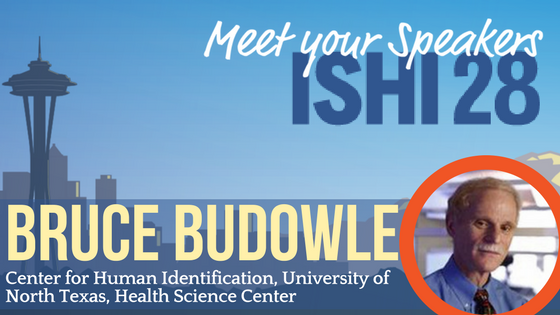The ISHI agenda is live and includes great talks from amazing speakers! While the forensic community is a tight-knit group, we can always get a little closer, right? With that in mind, we interviewed our speakers to preview their presentations and to get to know them a little better outside of their work. We’ve been posting their responses in a feature we like to call Under the Microscope.
Today, we’re chatting with Bruce Budowle, who will be presenting An Alternate Workflow for DNA Analysis with Increased Sensitivity of Detection and Reduced Consumption of Evidence: Casework and Legal Implications during the General Sessions on Thursday, October 5th.
Your talk centers around low quantity and low quality (LQLQ) samples. Can you estimate what percentage of samples a lab receives fall under this category?
This percentage is changing as casework keeps pushing the envelope to more challenged samples. But depending on the evidence and whether minor profiles are probative, potentially 20-30% (minimum).
What are the pros and cons of splitting a sample versus using the entire sample at once?
The cons are that there can be more loss of DNA by extracting each half than extracting the entire swab. In addition, the swab halves are not equal. One might argue that a pro is that evidence is left for another analysis that is less compromised. I suggest that this is a fallacious consideration as we should be interested in doing the best to get an answer whatever the final interpretation. Splitting may compromise getting an answer.
Without giving too much away, can you briefly describe the subsampling process and how this would benefit forensic labs?
It is a micro swabbing approach that concentrates sample in a localized area for PCR. The value is that essentially very little sample is taken. So the consumption argument in the courtroom may go away.
In the past, you’ve been critical of the reliability of LCN analysis. Does this new methodology solve the issue?
It doesn’t solve the problem. But it can reduce some of the samples that would have fallen into the category. However, combining this approach with newer tools such as STRmix may be the best solution for improving LCN analysis.
What do you feel is the biggest challenge the forensics laboratories are facing today?
Resources, education and training. Most of the issues we are facing seem to be related to these needs.
What do you think are likely to be the most exciting developments for the industry over the next couple of years?
Of course I am biased on what I am working on. But I think massively parallel sequencing is one. Another is the potential for the human microbiome to serve as another way to identify humans (which may improve LCN samples as well).
What tips would you give to someone who is just starting out in the forensics field, or what’s the best advice you’ve ever received?
Be honest and do the right thing.
How did you become interested in forensics?
It was by chance – saw an ad in the back of Science for a job.
When you’re not at work, what do you most enjoy doing?
Working out
For those who are on the fence about registering for the upcoming ISHI, please share your thoughts and reasons why they should attend.
This is one of the premier meetings that focuses on forensic genetics. One has an opportunity to see what work is being done now and what is in the future. Most importantly it is the best meeting for getting with colleagues who share a common interest (which in turn means more exchange and a better learning experience).
WOULD YOU LIKE TO SEE MORE ARTICLES LIKE THIS? SUBSCRIBE TO THE ISHI BLOG BELOW!


